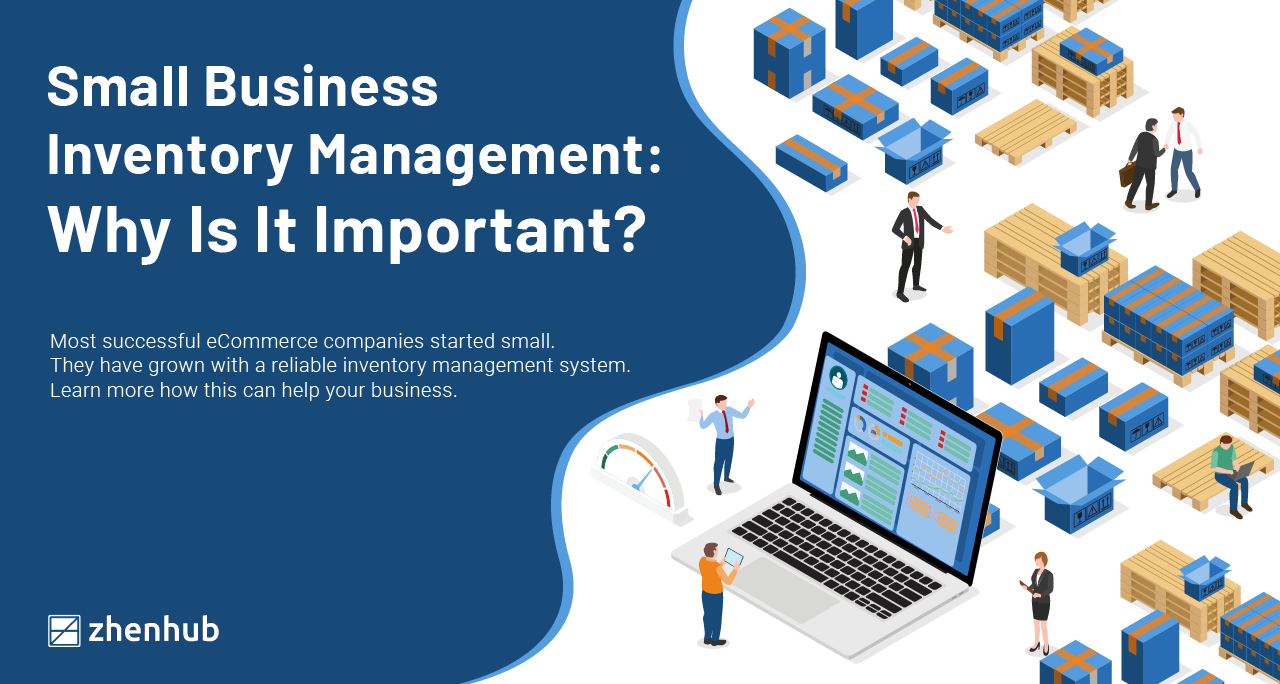
Small Business Inventory Management: Why Is It Important?
Time to read: 5 minutes
ECommerce has become the great equalizer. This technology has leveled the playing field, allowing small-to-medium businesses to compete with multinational operations. And it has exploded over the last two years. In a Statista report, eCommerce revenues will reach US$ 6.5 trillion. These transactions will come from an estimated 12-24 million eCommerce sites around the world. But the success of a company, regardless of its size, entails creating effective systems that enable scalability and growth.
Having sound Inventory management can significantly increase the growth of an eCommerce business. After all, for most operations, inventory is their largest asset.
It’s for this reason that companies need to make sure nothing affects the order fulfillment process. Any order delays can adversely impact company reputation and branding. With the advent of expedited shipping such as same-day deliveries or overnight shipping, 67% of online consumers expect eCommerce stores to fulfill orders within 48 hours at the longest. Anything less, and a company loses customers.
Having a reliable inventory management process also allows for scalability. It can help create a seamless supply chain that ensures orders are shipped promptly, thereby ensuring customer satisfaction with the product and the service.
Understanding inventory management is essential for every eCommerce retailer. In fact, in 2021, 43% of e-retailers report that improving inventory management is their number one priority. This article explores inventory management from the basics to the best practices.
What is Inventory Management?
With over 2.14 billion people worldwide expected to buy goods and services online this year, inventory management will be paramount. At its core, inventory management is about striking a balance and maintaining visibility. It is an essential part of the supply chain that tackles sourcing, sorting, storing, and selling inventory that includes raw materials and products ready for selling.
An inventory management system’s primary function is to ensure that an operation has the right stock at the right amount at all times. The right one can find a ”sweet spot” between overstocking and running out of stock. Companies cannot afford to overstock as it can result in a budget deficit. While the opposite, running out of stock can drive away potential clients.
Common Inventory Management Techniques
There are various inventory management techniques that businesses can implement. The right inventory-control method for a company depends on several factors. Below are a few of the most common scenarios:
Economic Order Quantity
Ordering the right number of products to stock is vital to keep inventory balanced. The economic order quantity technique or optimum lot size is a formula that utilizes several variables to compute the ideal order quantity. Variables differ from operation to operation. It can include production costs, rate of demand, and order shipping duration. Adapting EOQ will minimize costs and prevent overstocking.
Minimum Order Quantity
Most suppliers require minimum quantities from the retailers that make inventory purchases. eCommerce retailers need to do this to avoid rejection from suppliers. Bulk orders or buying reduces the cost per unit and potentially make it more economically viable in the long run. This inventory-stock technique is ideal for new retailers that are looking to stock inventory for the first time. Before diving headlong into this, the company has to have enough data, through research and marketing, to gauge the demand for a specific product.
Days Inventory Outstanding
Days Inventory Outstanding, otherwise known as DOI, entails determining the number of days it takes for inventory to convert into actual sales. The DOI varies from product to product. However, the lower the DOI, the better the business will do. An unsold stock takes space, and most of the time, it’s considered a loss.
Reorder Point Formula
Aside from determining the right number of products to purchase from a supplier, it is also important to note the perfect time to reorder. The reorder point formula answers this question by taking into account the lead time in days and safety stock in days. There’s a need to evaluate this regularly as there may be seasonal spike demands or cultural trends that suddenly go in vogue.
One such example was when Queen’s Gambit, a popular Netflix series about a young woman becoming a chess champion, was released. The series gave way to renewed interest in chess and sent chess set sales soaring. Chess set manufacturers probably re-evaluated their reorder point formula and will look at popular cultural trends more closely in the future.
Safety Stock Formula
Safety stocks refer to the emergency stock that an operation can use to fulfill orders when the inventory is running low. Like regular inventory, there is also the right number of safety stock to keep at all times. Figuring out the correct number of safety stocks involves finding the difference between the maximum daily usage and the average daily usage.
Case in point, the use of disposable face masks exploded in the last year due to the pandemic. More than 9,000 Chinese companies who manufacture these masks will need to reevaluate the safety stock formula as the new vaccines get rolled out and the appearance of far more infectious COVID 19 variants.
ABC Analysis
This inventory stocking technique splits the roster of inventory into three:
- products that often sell out
- goods that are more difficult to sell
- stocks that fall somewhere in between
Through ABC analysis, companies will be able to identify items that will require different controls and management. It’s similar to the 80/20 rule, where 80% of the sales will come from 20% of the inventory that sells out most. With this option, the best-selling products are always the priority.
Batch Tracking
This inventory stocking option is all about inventory quality control. It involves splitting and monitoring inventory based on similar traits. This is particularly ideal for retailers that sell perishable goods as it makes sense to group together items with identical expiration dates.
Perpetual Inventory Management
It is considered the most basic inventory management technique. Perpetual inventory management merely entails counting the number of stocks that come in as they are delivered. Often, merchants use spreadsheets or pen and paper to track inventory when implementing this technique. Modern systems do away with this antiquated tracking method and automate it as goods arrive.
Dropshipping
Dropshipping companies do not have stock on hand. Instead, these operations fulfill orders by ordering from a supplier once a customer buys a particular product. The supplier sends the products directly to the customer. With this option, quality control is beyond the hands of the seller. As more buyers go online, new automation tools will help dropshipping businesses reduce overhead costs and increase their profit.
Advantages of Proper Inventory Management
Inventory management is a powerful tool that secures the longevity of an eCommerce business in any given field. The success of the supply chain depends on how well-designed and thought-out the inventory management process is. An automated inventory management platform can significantly increase operational efficiency, reduce overhead costs, provide decision-makers with valuable data and insights, and even create new revenue channels.
Cost Reduction
Inventory management allows an operation to save money and boost business productivity. When a company has accurate data about their inventory, they are empowered to make the right business decisions. It can help procure the right products for the business and automatically reorder them once stocks get low. It can also reduce supplier lead time and obsolete inventory.
Fulfillment Optimization
Aside from cost efficiency, one of the benefits of inventory management is maintaining visibility and transparency. Using inventory management, companies can collect and analyze data to better grasp safety stock levels to fulfill orders easier. By being transparent about inventory status and fulfillment options, organizations can assure customers of any supply chain issues, such as handling more stringent measures due to COVID 19.
Better Customer Service
With an automated, fully deployed inventory management system, there will be fewer issues with fulfilling orders and immediately address any concerns with shipments and deliveries. It translates to better customer service and positive customer impressions. The company benefits from satisfied customers and will continue to do business with you.
Inventory is the biggest asset for most eCommerce retailers. As such, managing and protecting this asset should be a top priority. While there is a considerable investment in implementing inventory management systems, the advantages are well worth the effort.
Thankfully, retailers don’t have to go through the selection process alone. At ZhenHub, we can provide you with inventory management options that fit your operational and business requirements. For more information about inventory management options, reach out to ZhenHub today. You can also sign up for our one-stop tech-powered logistics solution to make warehousing, order fulfillment, and inventory management implementations easier and more rewarding.


